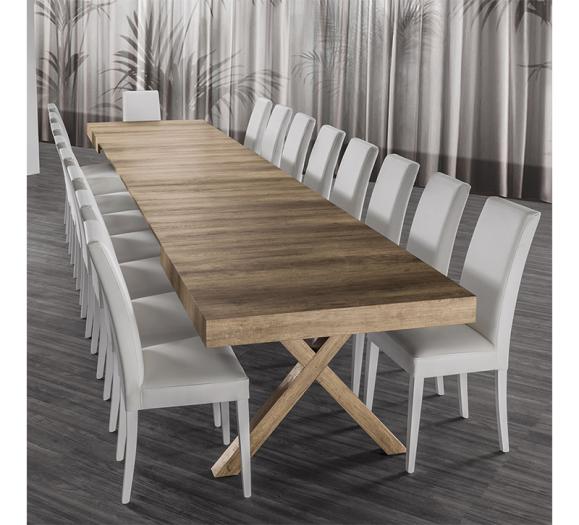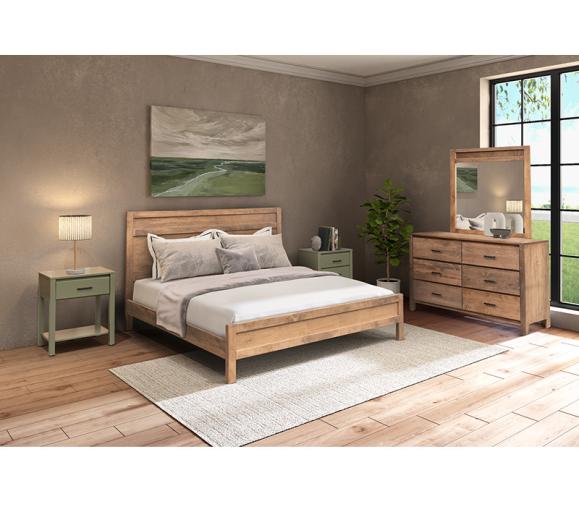We’ve all heard the saying “You are what you eat,” but many health and design industry experts are concerned that you are what you sit on – and they’re not alone. As we learn more about the harmful effects of materials and chemicals that are often used in the production of home furnishings, consumers are actively seeking out products that won’t put themselves or their families at risk.
To help consumers make healthy choices for their homes, the Sustainable Furnishings Council (SFC) recently launched the "What's it made of?" Initiative. The program enlists the home furnishings industry to work with their manufacturers and suppliers to eliminate harmful substances from their supply chains.
Retailers can make a pledge to ask their suppliers ‘What’s it made of?’ and access a supplier questionnaire at sustainablefurnishings.org. But first, read on to check out SFC's handy list of the “hazardous handful” – materials their experts say it’s best to avoid.
Volatile Organic Compounds
Known more commonly as VOCs, this group includes formaldehyde and is commonly found in products like adhesives, finishes, paint other coatings.
Usual suspects: Furniture made with composite wood.
Health risks: Prolonged exposure to VOCs can cause respiratory illness, cancer and decreased fertility.
Try this: Look for composite wood that meets formaldehyde emissions standards per California Code of Regulations, Title 17.
Flame Retardant Chemicals
Studies show chemicals applied to prevent the spread of fire aren’t effective. Instead, they leak out into the air and, ultimately, into our bodies.
Usual suspects: Foam cushions in couches, chairs and children’s products like mattresses and changing pads.
Health risks: Some flame retardant chemicals are connected to neurodevelopmental effects like hyperactivity as well as obesity, damage to the reproductive system and cancer.
Try this: Materials like wool, recycled polyester and certified organic and other plant-based fillings are naturally flame retardant. Look for a disclosure of flame retardant content label that many manufactures are now using nationwide.
Polyvinyl Chloride
Furniture manufacturers might use PVC or “vinyl” in either ridged or pliable forms.
Usual suspects: Outdoor furniture, upholstery fabrics and imitation leather.
Health risks: The harmful dioxins that PVC emits during its entire life cycle can cause neurodevelopmental problems, endocrine system disruption, birth defects, reproductive problems and cancer.
Try this: Just avoid it altogether.
Fluorinated Stain Treatments
Manufactures treat fabric and other textiles with fluorinated compounds to protect them from spills and stains.
Usual suspects: Upholstered furniture and rugs.
Health risks: Fluorinated compounds remain in the environment for a prolonged period of time. Humans ingest them along with contaminated food, and they’re known cause cancers, damage to the thyroid, high cholesterol and obesity.
Try this: Opt for naturally stain resistant fabrics like wool, washable textiles and those with stain-hiding patterns.
Antimicrobials
Manufacturers add chemicals like triclosan and triclocarban to products to kill germs, but there is limited evidence of their effectiveness. In 2016, the Food and Drug Administration ruled that over-the-counter consumer antiseptic wash products containing these two ingredients could not call themselves "antibacterial" because there was insufficient evidence to establish their effects at killing germs.
Usual suspects: Mattresses, finishes, glues and upholstery fabric.
Health risks: Not only are these chemicals connected to problems with the endocrine system, thyroid and reproductive system, they can also create “superbugs" - bacterial infections that are immune to antibiotics and continue to spread.
Try this: Simply avoid products with added chemical antimicrobials.
As consumers become more conscious of what they're putting in their homes, retailers and interior designers should be well-versed in these terms so they can better educate consumers. Are your customers worried about harmful chemicals in their products? Tell us about your experience in the comments!







